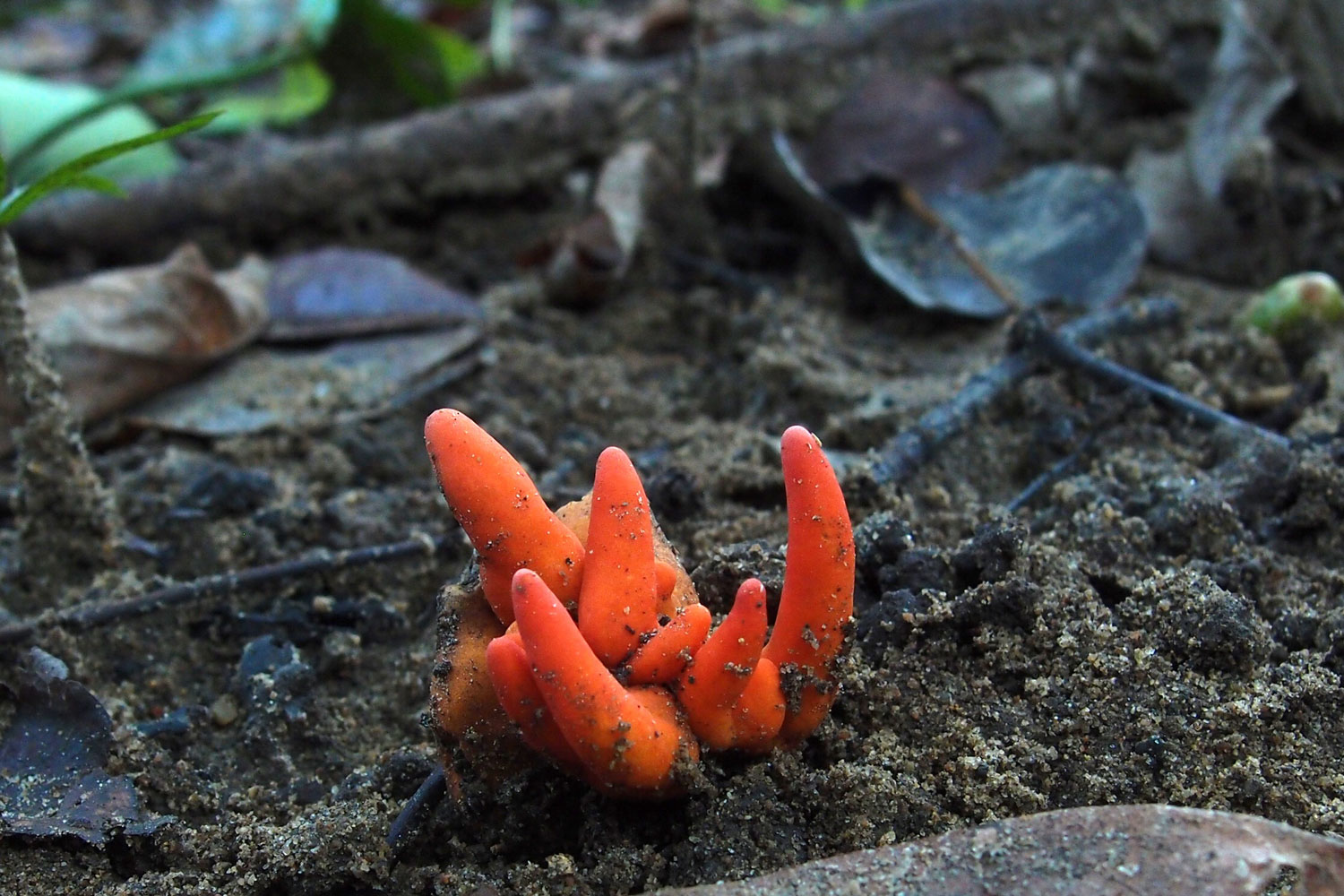Deadly fungus found in Far North Queensland
One of world’s deadliest fungi, the Poison Fire Coral, has been found in Far North Queensland for the first time, a long way from its usual home in the mountains of Japan and Korea.

James Cook University’s (JCU) Dr Matt Barrett confirmed the identity of the Poison Fire Coral fungus after local photographer Ray Palmer provided an image of a mystery fungus snapped in Redlynch in suburban Cairns.
The bright red Poison Fire Coral fruit bodies were found on tree roots and soil. Dr Barrett warned people to resist the urge to pick up the eye-catching fungus.
“If found, the fungus should not be touched, and definitely not eaten. Of the hundred or so toxic mushrooms that are known to researchers, this is the only one in which the toxins can be absorbed through the skin,” said Dr Barrett, a mycologist from the JCU Australian Tropical Herbarium (ATH) who specialises in the study of fungi.
“This record extends the distribution of the fungus considerably, and it may be even more widespread in tropical Australia,” said Dr Barrett.
Encyclopedia Britannica lists the species as the world’s second deadliest fungus. Several fatalities have been documented in Japan and Korea where people have brewed and drunk a tea with Poison Fire Coral, having confused it for the edible Ganoderma (Lingzhi or Reishi) or Cordyceps (vegetable caterpillar), which are used in traditional medicines.
The Poison Fire Coral produces at least eight toxic compounds that can be absorbed through the skin.
“Just touching the Fire Coral fungus can cause dermatitis (reddening or swelling of the skin). If eaten, it causes a horrifying array of symptoms: initially stomach pain, vomiting, diarrhea, fever and numbness, followed over hours or days by delamination of skin on face, hands and feet, and shrinking of the brain, which, in turn, causes altered perception, motion difficulties and speech impediments,” explained Dr Barrett.
If left untreated, death can occur from multiple organ failure or brain nerve dysfunction.
Dr Barrett said it was most likely that the fungus had occurred naturally in Cairns. There have also been reported instances of it growing in Papua New Guinea and Indonesia.
Scientists from ATH are re-evaluating the scientific name of this fungus in light of genetic and microscopic characteristics.
Dr Barrett joined ATH this year and since moving to Cairns from Western Australia, he has assisted many citizen scientists to put a name to their fungi finds and photos.
The Poison fire Coral is just one of more than 20 fungi species Dr Barrett has identified for local people that were not previously known to live in northern Queensland.
“The fact that we can find such a distinctive and medically important fungus like Poison Coral Fire Coral right in our backyard shows we have much to learn about fungi in northern Australia,” said Dr Barrett.
More Information
Published:
03, October 2019